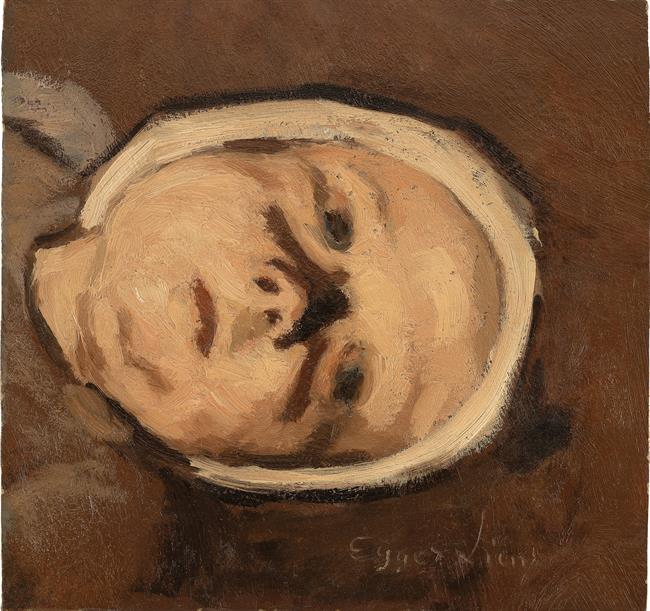 Child
1922
Child
1922
Albin Egger-Lienz
Stribach 1868 - 1926 St. JustinaAlbin Egger-Lienz (actually Ingenuin Albuin Trojer) was born in 1868 in Stribach near Lienz (East Tyrol) as the child of the church painter and photographer Georg Egger-Lienz and the farmer's daughter Maria Trojer. He received his first instructions in drawing and painting from his father, then from Hugo Engl, a student of Franz Defregger. Egger-Lienz's early history and genre paintings clearly show the influence of Defregger, who was one of his friends; he produced mostly brown genre paintings of Tyrolean peasant life.
From 1884 to 1893 he studied at the Academy of Fine Arts in Munich under Karl Raupp, Gabriel von Hackl and Wilhelm Lindenschmit. In 1894 he wrote his first major composition, the "Ave". Egger-Lienz remained in Munich for five more years, spending the summer months in Tyrol. In 1899 he married Laura von Möllwald and moved to Vienna, where he became a member and later vice president of the Künstlerhaus. From 1908 to 1910 Albin Egger-Lienz was a member of the Vienna Secession.
His daughter Lorli was born in 1900, his son Manfred in 1903. At this time the painter travels to Längenfeld in the Ötztal, an area that inspires him and to which he is to be drawn repeatedly. His rural subjects become increasingly monumentalist and he begins to concentrate on a few main motifs. Strong contrasts and plasticity characterize his works. The First World War became a drastic experience in his life as well as in his artistic development: he created monumental war paintings such as "Den Namenlosen", "Kriegsfrauen" or "Finale". The subject of war would occupy him until the end of his life; today these works are regarded as powerful memorials to the horrors of battle and violence. Existential questions about life and death will permeate his entire oeuvre.
Still in his 50s, Albin Egger-Lienz sought new forms of expression and experience. He redesigned many of his large paintings and consistently new versions were created even of prominent works such as "Ploughman", "Mothers", or "Resurrection". His works are on permanent display in the Leopold Museum, Vienna and recently shown in the Egger-Lienz Gallery at Schloss Bruck, Lienz.
-
Child 1922
